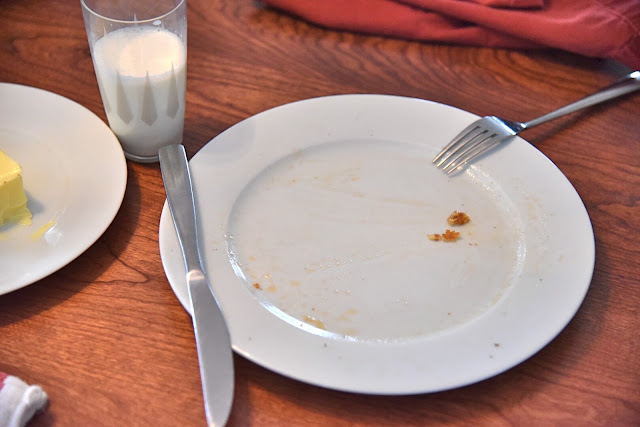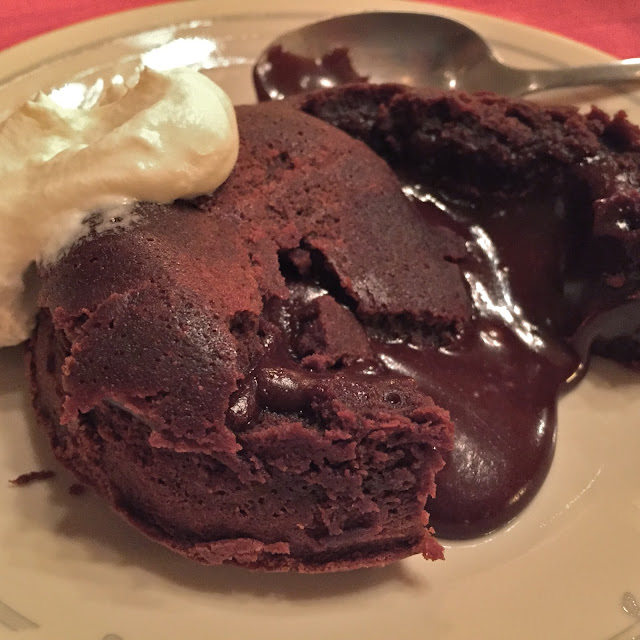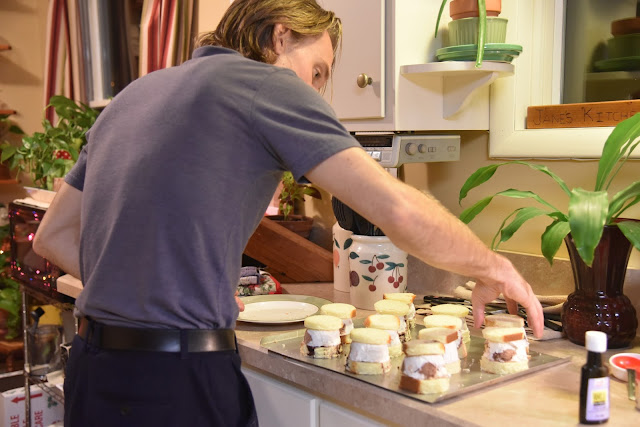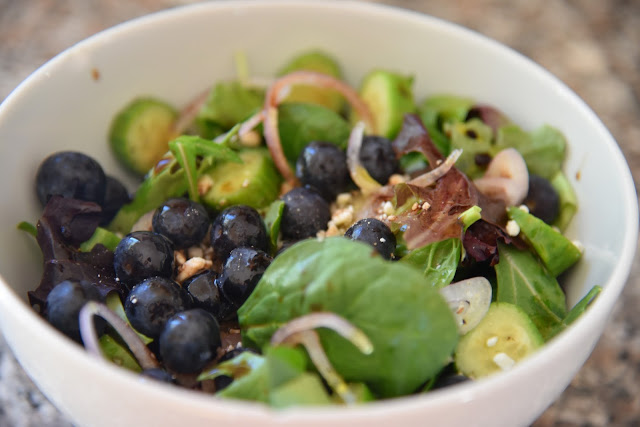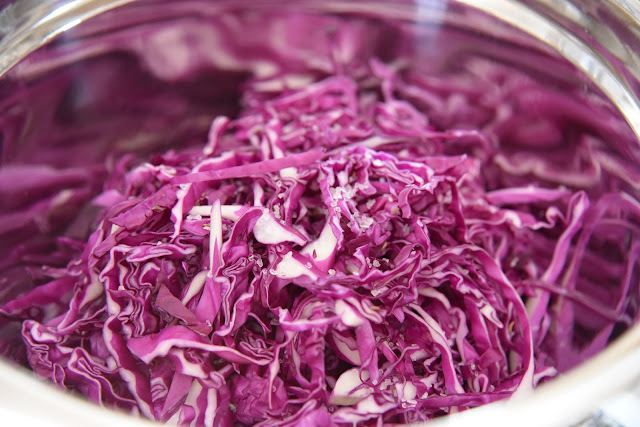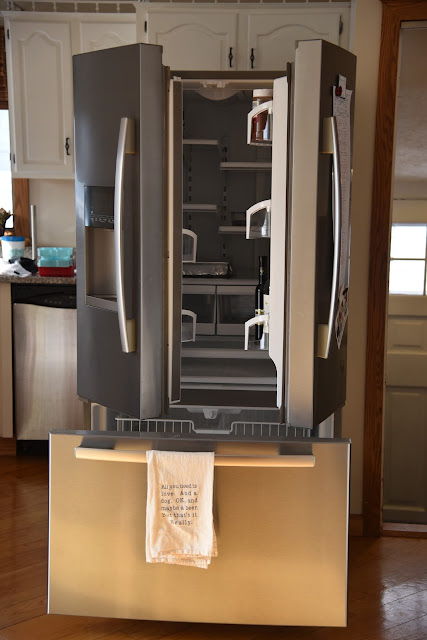When I was growing up, my mother was a huge proponent of "Eat your veggies." Like, HUGE. Not in a disturbing "Here's a cupcake (i.e. bran muffin)!" kind of way but an I-will-serve-salad-with-dinner- EVERY-night-alongside-another-vegetable-on-the-plate kind of way. I cannot remember sitting down for dinner once without there being vegetables in a variety of forms on the table.
By the time I had entered this world, frozen vegetables had kicked canned veggies out of the kitchen for good (thank GOD), so, yes, my veggies tended to be "zapped" in that monstrous new-fangled machine that took up almost the entire counter in our kitchen called a "microwave." But no matter—we were getting our veggies. My mother even figured out how to microwave frozen vegetables to be "California-style."
Needless to say, because of my childhood home dining experiences, as an adult, eating dinner without two vegetables on my plate seems like half-assed meal planning and flat-out vaguely scary. Like, "Now I may not be able to poop tomorrow" scary. And "Maybe I should go take that multi-vitamin..." So I buy and cook a lot of veggies. A LOT. To the point I get comments at the checkout in the grocery store. The other day the teenage bagger was trying to guess what I was going to use each vegetable for. Then he picked up this one (pardon the stock photo):
 |
| https://pixabay.com/static/uploads/photo/2016/01/11/10/04/fennel-1133309_960_720.jpg |
This is the vegetable that always gets a lot of questions, the most common one being, "What IS this?"
This delightful root vegetable can be found under two different names in the produce section: fennel or anise. It can be eaten raw or cooked, and it has become one of my all-time favorite veggies. It's seeds are what give Italian sausage that distinctive peppery, pungent, almost licorice-y flavor and are what most people think of when you say "fennel."
I use the seeds in my pasta sauce and in my meatballs, but I have mostly learned that I love the fennel bulb the most. I love it straight up, unadulterated, sliced and then roasted.
You heard me, people. ROASTED. The prime way, and easiest way, may I add, to cook vegetables. Roast them in your oven or toaster oven, or even pan-roast them in a skillet. I don't care which way. But roasting vegetables does two things that I just absolutely love: 1) it changes the flavor of the vegetable completely because it essentially is slowly caramelizing all the sugar in the veggie. The flavors become deeper, more mellow. And 2) because your veggie is slowly being cooked in a single layer by hot air or a hot surface, you have more control of how cooked it gets. You can fork several pieces every 10 minutes or so and see how "done" they are. Some veggies I like with a bit of bite left, like zucchini or carrots or cauliflower. Others I like until they are just soft enough to bit straight through, like potatoes or the hard squashes or this fennel, here. There is just not a simpler, more delicious way to cook vegetables. Not to mention the prep time is, like, two minutes. Look how gorgeous...:
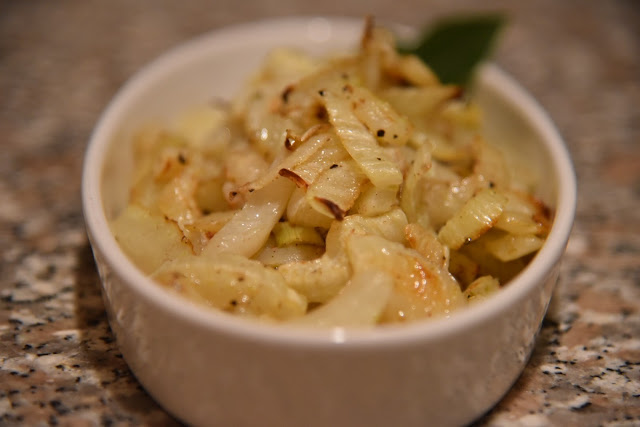
On the far,
far opposite side of my Favorite Ways to Cook Vegetables spectrum is cooking vegetables in water. In
any kind of water. If you come across a recipe that tells you to boil a vegetable, RUN—hard and
fast. Boiling is a technique that leaches the vitamins out of your veggies so fast and reduces their deliciousness to a murky-tasting pile of mush.
Don't even let the French talk you into it. They may call it something fancy:
braising. It sounds nice, doesn't it? So nice that I tried it the other night. Julia talked me into it. So I took these gorgeous leeks:
and put them in a pot of water. I stupidly thought the butter would make a difference... She told me to simmer them for some God-awful amount of time, which I convinced myself was because they were leeks and that somehow would make them better.
And then when MOST of the water had simmered off, I put it all (including the water that was left) into a roasting pan and roasted them for another quarter of an hour. Here's what ended up on my plate:
I know. I know. I mean, LOOK AT THEM. They scream "overcooked," "mushy," "slimy," and "I-won't-need-teeth-to-eat-this" right from the plate! But, being the experimenter that I am, I tried them, anyway, with a very timid bite...
I almost titled this post, "Mastering the Gag of French Cooking," but I decided to come at it from a more positive angle. And to not offend the devoutest of Julia Child's fans.
So. Learn from me. Roast your veggies. Roast them. It's the easiest. The yummiest. The best.
Here's how:
Ingredients:
- your veggie or veggies of choice, cut up however you want; just try to make the pieces all the same size
- (NOTE: if using multiple types of veggies, roast similar "hardnesses" together so that they can be done in the same amount of cooking time OR add veggies that are softer/will cook faster to the pan a bit later after the longer-cooking ones)
- olive oil or your favorite type of oil (I like the flavor of olive oil best)
- kosher salt
- fresh ground black pepper
Equipment needed:
- a medium bowl
- a sheet pan or a casserole dish or skillet to lay your veggies out in a single layer
- (NOTE: the more wiggle room the veggies have where they aren't doing a whole lot of touching, the better the browning will be. Too much contact makes them steam more than brown).
- aluminum foil or parchment paper to line the pan (easier clean up; skip if you don't have any)
- a flat metal or plastic flipping spatula
Directions:
- Preheat your oven to 425°. If using a toaster oven, do 375° to 400°, depending if it is tiny or big. If you are using a skillet on the stove top, heat it over medium heat.
- Line your pan with foil or parchment for easy clean up. If using a skillet, just leave it alone.
- Place your veggies in the bowl.
- Drizzle the veggies with olive oil. Toss the veggies with the oil really well with your hands. If the veggies don't all look coated, drizzle with more oil and keep tossing. You want the veggies coated well but not swimming in oil.
- Sprinkle the veggies with salt and pepper and give them one last good toss to coat.
- Dump the veggies in the pan and spread them out in a single layer. If you are using a skillet, use a spoon or spatula to spread them out; you don't want to burn your fingertips on the hot skillet...
- Place the pan in the hot oven and roast for 10 minutes. Take the pan out of the oven, toss the veggies to recoat and flip, then put them back in the oven for another 10 minutes. If you are using a skillet, toss them a bit more frequently. You want browning, but the smaller surface area can make them cook faster.
- After the second 10 minutes, you are going to be making a judgement call on how well done you want your veggies. Spear a couple pieces with a fork to test how crunchy they are. When they feel good to you, remove them from the oven and dump them in a serving dish. Garnish however you want.
- Eat with abandon.
Bonus Tip! If I feel like jazzing my veggies up a bit, I'll toss them with a little something extra when I add the salt and pepper. Something like:
- lemon zest from the peel of one lemon
- a few smashed garlic cloves (don't even peel them!)
- a couple shallots quartered lengthwise right through the root
- a sprinkle of a favorite spice or spice blend
- a few good shakes of my Regan's orange bitters
Get creative! I bet you it will taste delish. And if it doesn't? Well, you don't know until you try, right?
So go get roasting! Comment below and share what you've tried! And if you have any questions, please ask below. I am happy to help!

